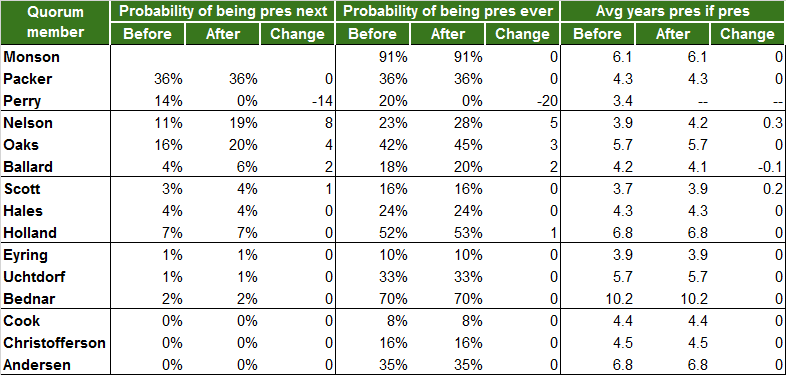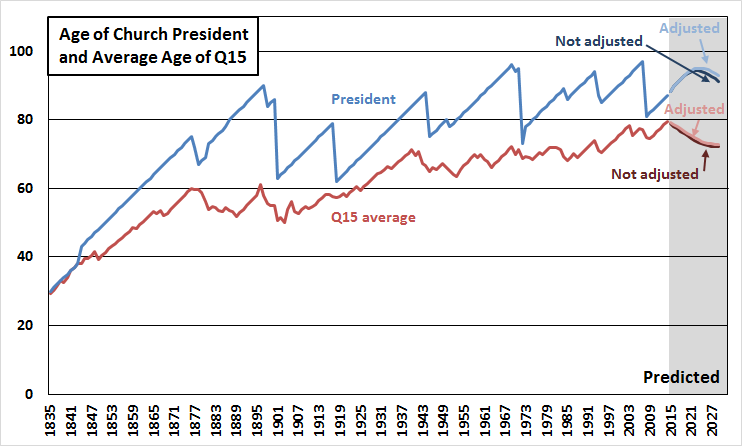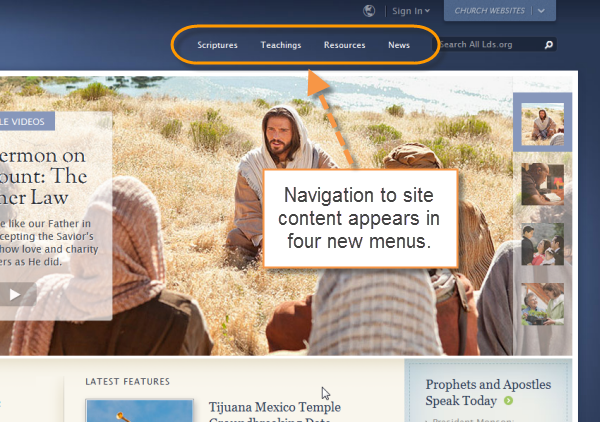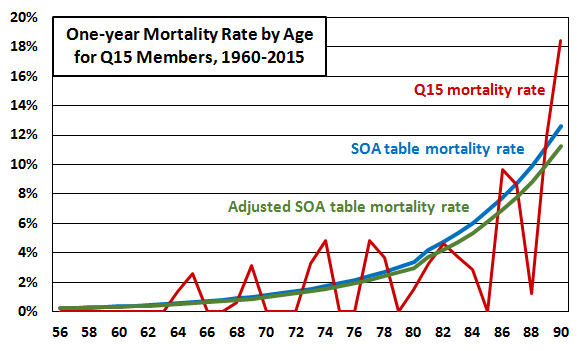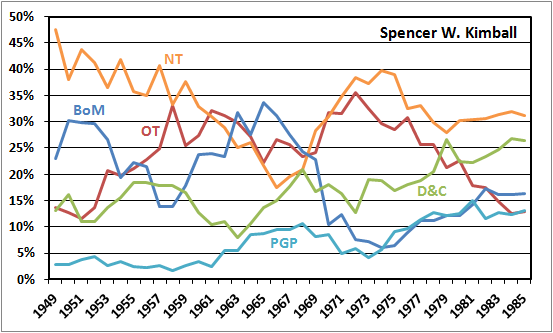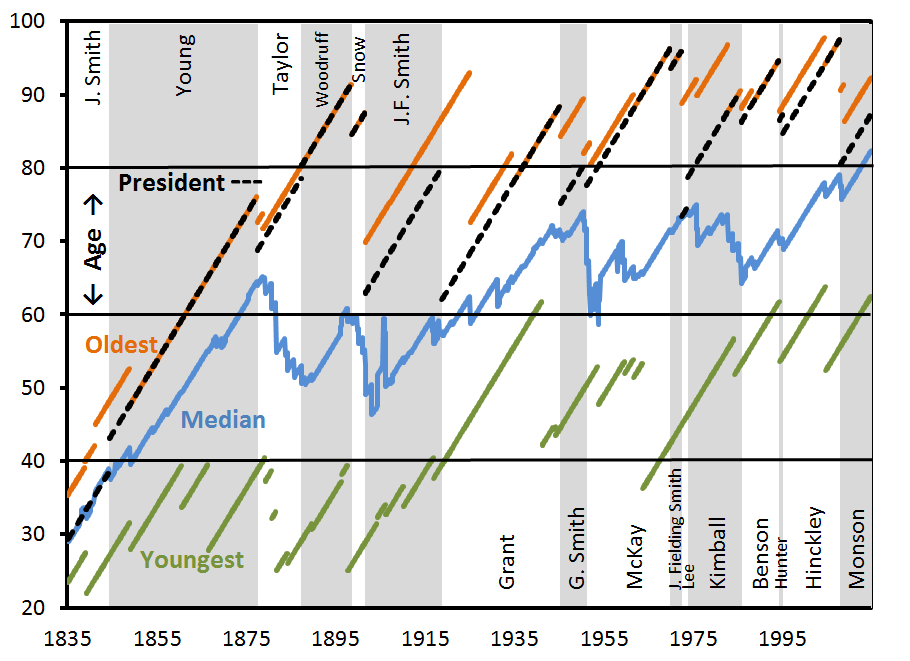In light of the US Supreme Court’s decision today to legalize gay marriage across the US, I thought this post I wrote back in 2013 might be relevant again. I think the conclusion still holds. (You can read the original post and comments here.) Read More
Showing all posts by Ziff
Practicing Polygamy Versus Being Polygamous
How do we describe Mormon polygamy? I’ve often seen it said that 19th century Mormons “practiced” polygamy. For example, here’s President Hinckley on Larry King Live in 1998:
The figures I have are from — between two percent and five percent of our people were involved in [polygamy]. It was a very limited practice; carefully safeguarded. In 1890, that practice was discontinued.
There’s lots to criticize here, but what I’m concerned with is his use of the word “practice.” The word is used to minimize how central polygamy was, to demote it to just a minor incidental thing that some Church members did.
The Covenant Keeper’s Guide to Attending Church While on Vacation
You may have heard that it has been said by them of old time that covenant keepers will attend the full three-hour block of Sunday church meetings, even while on vacation. But I say unto you that that’s not nearly enough. Simply attending the three-hour block is for slothful, lukewarm covenant breakers who were clearly less valiant in the pre-existence. If you want to demonstrate that you’re a true covenant keeper, you’ll be sure to do the following while on vacation:
Church President Probability Changes with Elder Perry’s Death
Elder L. Tom Perry died on May 30th at the age of 92. I’m sure you won’t be surprised to learn that one question that I immediately wondered about on hearing the news was how this would affect the other Q15 members’ probabilities of becoming Church President.
Here are their probabilities and average predicted years of being President before and after Elder Perry’s death. These come from the simulation I posted about a couple of months ago where I used a mortality table to run 1000 scenarios and see in how many each Q15 member would become Church President.
Quote . . . Close Quote
I make the Sunday bulletins for my ward. I typically put a quote from a scripture or a Church leader that’s related to the theme of the sacrament meeting on the front. I often look for quotes from Church leaders by looking through recent Conference talks on related topics. Recently while I was doing this, I was reading a talk given by a member of a general auxiliary presidency, and I was struck by how much of her talk was made up of quotes of other sources. This reminded me of David Evans’s excellent post at T&S a few months ago where he looked at which speakers in Conference quote which types of sources. One of his findings was that higher-authority speakers quoted less from high authority sources than did lower-authority speakers.
What I wondered is whether higher-authority speakers quote other sources in general less than lower-authority speakers, regardless of the level of authority of the sources being quoted. An advantage of this question is that it didn’t require me to figure out authority levels of sources. Instead, I could just count words in talks and count how many of the words were in quotes.
I got data from all the talks in the last ten Conferences (October 2010 – April 2015). For each talk, I noted the speaker’s calling, the number of words in the talk, and the number of words in the talk that were part of a quote. Here are results by calling group.
| Position | Talks | Percent quotes |
|---|---|---|
| First Presidency | 88 | 14.8% |
| Quorum of the Twelve | 118 | 21.8% |
| Quorums of Seventy | 99 | 21.5% |
| Other – men | 19 | 20.8% |
| Other – women | 50 | 24.1% |
A Mother There or Multiple Mothers There? A look at whether GA statements about Heavenly Mother leave the door open for polygamy
I’ve always thought that a big positive of the Proclamation on the Family is that it mentions Heavenly Mother. Or to be more precise, it mentions Heavenly Parents. Here’s a quote from the section where they’re brought up:
All human beings—male and female—are created in the image of God. Each is a beloved spirit son or daughter of heavenly parents, and, as such, each has a divine nature and destiny.
I have always read “heavenly parents” here to mean a heavenly couple: Heavenly Father and Heavenly Mother. But I was part of an online discussion recently in which Nancy Ross (who you might know from the papers she has co-written on Mormon feminism) pointed out that the wording here is completely compatible with the possibility of a polygamous Heavenly Father married to many Heavenly Mothers. “Heavenly parents” could be two (as I’ve always read it) or it could be 50 or 10001. Another participant in the discussion, Melissa Mayhew (who you may know from her blogging as Rune at Feminist Mormon Housewives), suggested that it would be interesting to look at other statements GAs have made about Heavenly Mother to see if they’re also compatible with a multiple-Heavenly Mother reading. I thought that was a great idea, so that’s what I’ll be doing in this post.
Alzheimer’s Prevalence in the First Presidency and the Quorum of the Twelve
How many of the fifteen men in the First Presidency and the Quorum of the Twelve are currently suffering from Alzheimer’s disease? Of course I don’t know the answer to this question. I can give you an estimate, though. Since I’ve been crunching numbers recently to predict which Q15 members might become Church President, I have all these data on their ages and life expectancies lying around, and given that age is a strong predictor of Alzheimer’s, I thought it would be an interesting exercise to match up the age data with an Alzheimer’s prevalence table to see what proportion of the quorum might suffer from it in the past, present, and future.
The major data sources I used are (1) ldsfacts.net for birth, calling, and death dates for historical Q15 member ages, (2) the simulations I did for my post last month on predicting who will become Church President, for future Q15 member ages, and (3) this paper from the journal Alzheimer’s and Dementia for the Alzheimer’s and dementia prevalence rates. If you’re interested, I’ve described the process I followed in more detail at the end of this post.
Here’s a graph showing the average age of the Q15 and the age of the Church President from 1835 to 2014 (taken at the end of each year), and predicted ages for the Q15 and for the Church President for the next 15 years. I calculated predicted ages in two ways, one using the SOA mortality table that I used for my post last month about predicting which Q15 members would become Church President (labeled “not adjusted” in the graph, with darker colored lines), and the other (labeled “adjusted,” with lighter colored lines) with the mortality rates in the SOA table multiplied by 0.89 because I found in analyses for another post that this provided better fit to actual historical mortality rates of Q15 members.
She Shall Be an Ensign: A history of the Church of Jesus Christ of Latter-day Saints, told through the lives of its women.
Ardis Parshall, who you probably know as the author of the Mormon history blog Keepapitchinin, is planning to write a history of the Church told through the lives of women. She is asking for support through a Kickstarter campaign. I believe this is important work because I think the book will serve as a great counterweight to the overwhelmingly male-narrated and male-focused histories we currently tell in the Church. I hope it will help both women and men to have a broader vision of what women have done in the Church, and as consequence a broader vision of what women might be doing now and in the future. I have made a pledge, and I’m posting to ask you to also consider pledging. For a pledge of $10 or more, you’ll get a copy of the ebook version of the book, and for a pledge of $25 or more, you’ll get a hard copy.
Placement of Scriptures vs. Conference in Menus at LDS.org
Last week, the Church rolled out a redesigned version of the navigation menus at lds.org. The new menus rearranged links to parts of the site in order to make it easier for site visitors to find what we’re looking for.
One change in particular that seems unrelated to usability caught my eye, though. In the old menus, scriptures appeared in their own menu, and General Conference was in a menu labeled “Teachings.” Here’s a screenshot that shows the old menus. I’m sorry it doesn’t show General Conference under “Teachings,” as the old menus aren’t available anymore so I can’t take a new screenshot. I’ll just have to ask you to trust me that it was there. Also note that the callout calls the menus “new” because this image is from 2012, when the old menus were introduced.
A Look at Conference Speakers’ Favorite Verses of Scripture
I thought it might be fun to look at which speakers in General Conference are most fond of quoting which particular verses of scripture. If you’re thinking you’ve seen me blog about this before, you’re right. It’s just that in my previous posts, I’ve only looked at the level of book of scripture, but now I’m getting all the way down to the verse level. I apologize in advance; I don’t have any interesting hypotheses to examine here. This is another post where I’m just looking at some data descriptively and saying, “Isn’t this cool?”
I took scripture reference data from the LDS Scripture Citation Index. I used the current version of their site and not the new beta version because it was easier for me to pull data from the current version. Unfortunately, this means that what I have is only updated through 2013. The Conference data begins in 1942.
The table below lists the top five verses cited for speakers in Conference since 1942. I’ve limited it to showing top fives for two groups of people: Q15 members who have at least 500 total verses cited, and female auxiliary leaders who have at least 100 total verses cited. Many of the speakers have a tie in their #5 spot, so I’ve extended the table to show all tied verses, except in a few cases where it would have made the table ridiculously long (e.g., Julie B. Beck has a 25-way tie at #5). I’ve also included a brief quote or summary note on each verse to help jog your memory for verses that are less well-known, and I’ve linked each verse reference to the scriptures at lds.org so you can go read them in full if you’re interested.
Predicting Who Will Be Church President: Fit of Actuarial Mortality Table to Historical Data
Last month, I wrote a post where I used a mortality table and the current ages of the First Presidency and Quorum of the Twelve to see who among them would be most likely to become Church President. One question that was raised on the post and in some Facebook discussions was how well that mortality table matched up to historical mortality rates of Q15 members. In this post, I’ll try to answer that question.
I looked at historical data from January 1960 to April 2014. Each month1, for each current Q15 member, I noted two pieces of information: his age at the beginning of the month, and whether he was still living one year later. When I aggregated all the data together, they made an empirical mortality table. For any age that at least one Q15 member during that time period lived to, the proportion of such members who died within one year was the empirical mortality rate. Of course, there’s more data for the table at some ages than others, as few Q15 members during this time period were as young as their forties, but many have been in their sixties, seventies, and eighties.
Here’s a graph showing the mortality rate for Q15 members (in red), along with the mortality rate for the Society of Actuaries mortality table I used (in blue). I included only ages for which I had at least 120 person-month observations (or 10 person-years).
Could President Uchtdorf Become *President* Uchtdorf?

After I wrote last week about the probability of each of the members of the Q15 becoming President of theChurch, a few people asked specifically about President Uchtdorf’s chances. And I share their interest. I have found him to be a big breath of fresh air, and I would love it if he did become President.
So what would it take for President Uchtdorf to become President Uchtdorf? Here’s a chart showing a little information for him and all the Q15 members senior to him.
| Quorum member | Rank | Birth year/mo | Age | Prob Uchtdorf outlives |
|---|---|---|---|---|
| Monson | 1 | 1927 Aug | 87 | 84% |
| Packer | 2 | 1924 Sep | 90 | 88% |
| Perry | 3 | 1922 Aug | 92 | 91% |
| Nelson | 4 | 1924 Sep | 90 | 86% |
| Oaks | 5 | 1932 Aug | 82 | 71% |
| Ballard | 6 | 1928 Oct | 86 | 80% |
| Scott | 7 | 1928 Nov | 86 | 82% |
| Hales | 8 | 1932 Aug | 82 | 74% |
| Holland | 9 | 1940 Dec | 74 | 48% |
| Eyring | 10 | 1933 May | 81 | 69% |
| Uchtdorf | 11 | 1940 Nov | 74 | N/A |
Verses of Scriptures Most Often Quoted in Conference
Which of the Ten Commandments gets quoted most often in General Conference? In this post, I’m going to look at some lists in the scriptures (like the Ten Commandments, the Articles of Faith, etc.) and show the relative popularity of the items in the list in terms of how often they’ve been quoted in Conference.
As I so often do, I got data from the LDS Scripture Citation Index to answer this question. They have data from Conferences from 1942 to 2013. Unlike with my other recent posts using their data, I took data not just at the level of book of scripture, but all the way down at the verse level, which of course was required to allow me to look at comparisons between individual verses.
So let’s get started. Which of the Ten Commandments is cited most? (For simplicity, I just looked at references to Exodus 20, and not to any other places in the scriptures that the Ten Commandments appear.)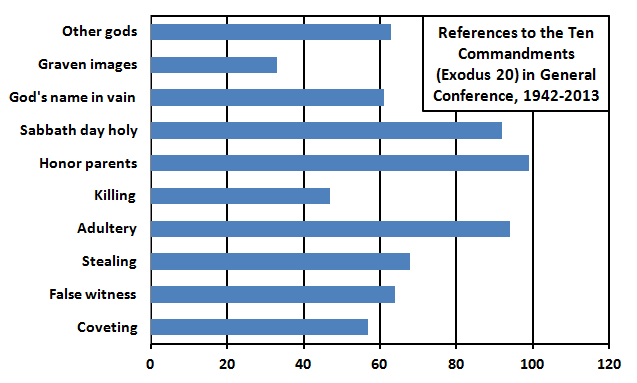 Read More
Read More
Predicting Who Will Be Church President (Now Continuously Updated!)
Update: Now that Elder Perry has died, I have replaced the continuously updated table and graph with static versions that show the probabilities as of May 2015. I will write a new post with continuously updated probabilities after his replacement is called in October.
Who among the current First Presidency and Quorum of the Twelve is mostly likely to eventually become President of the Church?
Which GAs Prefer Which Books of Scripture? (Take 3)
This post is a follow-up to my post last week, where I looked at how much members of the First Presidency and Quorum of the Twelve (Q15) quote from each of the five books of scripture in the LDS canon in their Conference talks. In the previous post, I showed one breakdown for each Q15 member, aggregating his citations of scripture in all his Conference talks, across whatever period of years he served in the Q15. In this post, I’ll show trends across time for each individual Q15 member. The previous analysis would miss it if a GA changed over time from preferring the Book of Mormon to preferring the New Testament, for example. This analysis might be able to show such changes (if they’re large enough). As for the previous post, my data source is the LDS Scripture Citation Index.
The graphs below show seven-year moving averages for the percentages of citations each Q15 member took from each book of scripture. There’s nothing special about seven years for the moving average. I chose it by eyeball. The year-to-year data often jump around a lot, which isn’t surprising given that for Q15 members who aren’t in the First Presidency, one year’s worth of Conference talks is typically just two talks. Seven years of aggregation looked like a good compromise that smoothed out the yearly variation but didn’t smooth so much that it made changes over time disappear. One other note is that I’ve only made graphs for members who have at least 16 years of data. This allows for 10 years worth of seven-year moving averages to be shown (because the first six years are combined into the initial seven-year moving average).
Graphs for Q15 members are shown in the order they were called, which is the same ordering I used in my previous post. Also, to make it easier to look back and forth between the two posts, I’ve used the same color to represent data for each book of scripture as in the previous post. One warning with these graphs is that the scaling of both the horizontal and vertical axes changes from person to person to best display each Q15 member’s data, so be careful if you’re looking at comparisons across graphs.
Which GAs Prefer Which Books of Scripture? (Updated!)
I wrote a post last year that looked at which books of scripture members of the First Presidency and Quorum of the Twelve (Q15) quote from most in Conference. In an article published last week, Peggy Fletcher Stack briefly referred to my work in a discussion of the Book of Mormon taking priority over the Bible in Mormon thought. She specifically talked about the influence of Ezra Taft Benson, and it occurred to me that it would be easy to expand my post from just looking at the living members of the Q15 to including past members as well, so we could actually see what President Benson’s numbers looked like. In this post, I’ll look at which books of scripture members of the Q15 back through Spencer W. Kimball quoted most in Conference. Unfortunately, I can’t go farther back than that because the LDS Scripture Citation Index, from which I’m pulling data, only goes back as far as 1942, so Q15 members called before then have incomplete data. President Kimball was called to the Q15 in 1943, so he is the oldest member for whom I have complete data. Read More
Three wards enter. Four wards leave.
My ward is getting divided this Sunday. Or as you can probably guess from my title, it’s not actually a straight-up split of my ward. It’s that I’m in one of three wards that will have its boundaries realigned, and the result will be four new wards.
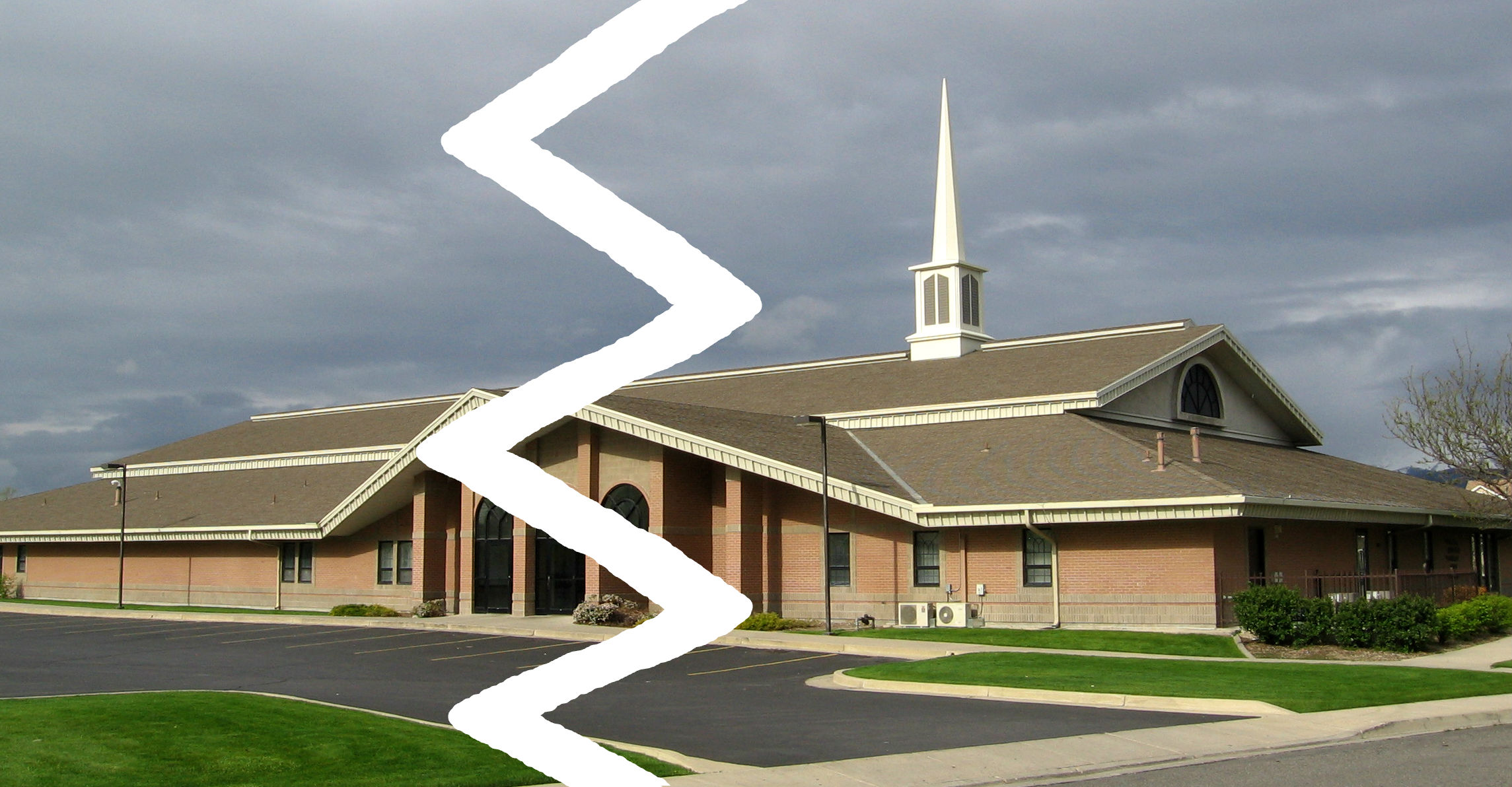 I’ve been through this process only twice that I remember. One time was when I was about sixteen. My family had lived in the same place for eight years or so, and I was felt pretty comfortable in my ward. Between the time that the realignment was announced and the release of the actual details of who would end up in which ward, I remember being extremely worried about having the ward split cut me off from my best friends in the ward. As I recall, the change ended up making very little difference, at least to me. All my best friends were still in my ward after the split. And in retrospect, it’s kind of odd that I was that concerned. I lived in Utah Valley and the ward was geographically tiny, so even if my friends had been divided away from me, I could have still easily walked the short distance to their houses to visit them.
I’ve been through this process only twice that I remember. One time was when I was about sixteen. My family had lived in the same place for eight years or so, and I was felt pretty comfortable in my ward. Between the time that the realignment was announced and the release of the actual details of who would end up in which ward, I remember being extremely worried about having the ward split cut me off from my best friends in the ward. As I recall, the change ended up making very little difference, at least to me. All my best friends were still in my ward after the split. And in retrospect, it’s kind of odd that I was that concerned. I lived in Utah Valley and the ward was geographically tiny, so even if my friends had been divided away from me, I could have still easily walked the short distance to their houses to visit them.
The other ward division I recall going through was just a couple of years ago, when my wife and I lived in a college town that had two wards that were realigned to make three. I was less worried than I had been as a teen, but I still recall worrying that the people I liked most in the ward would end up split away from me. Again, for me the outcome was very little change. All the people I liked most stayed in the ward with me.
What strikes me about the process of ward boundary realignment is that I know so little about it. The process of how such things come about is pretty much completely opaque to me. So what I’d like to do is pose a few questions about the process and speculate a little about the answer to each, and then hope you, dear reader, will be so kind as to share any knowledge you have in the comments.
Do you do apology?
The following is an imagined conversation between Kate Kelly and Dallin H. Oaks.
Do you do apology?
We do not do it, Kate Kelly!
We do not do apology. Read More
Aging of the First Presidency and Quorum of the Twelve
The median age of the members of the First Presidency and Quorum of the Twelve (Q15) is currently about 83. Even for a group that’s often thought of as being old, this is unusual. In fact, the Q15 is older now than it has ever been before.
Here’s a graph showing the age of the Q15 since 1835. The blue line shows the median age. The orange lines show the age of the oldest Q15 member; the green lines show the age of the youngest. The dashed black line shows the age of the Church President. The data come from ldsfacts.net.
